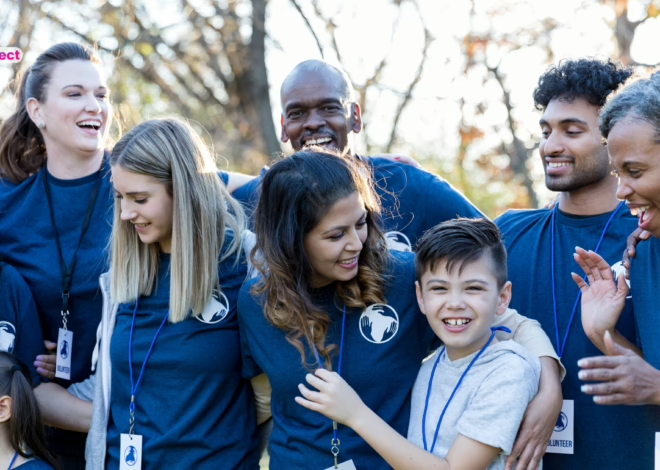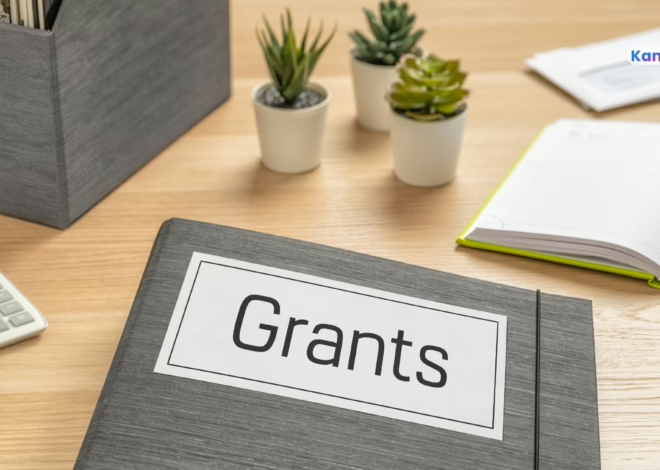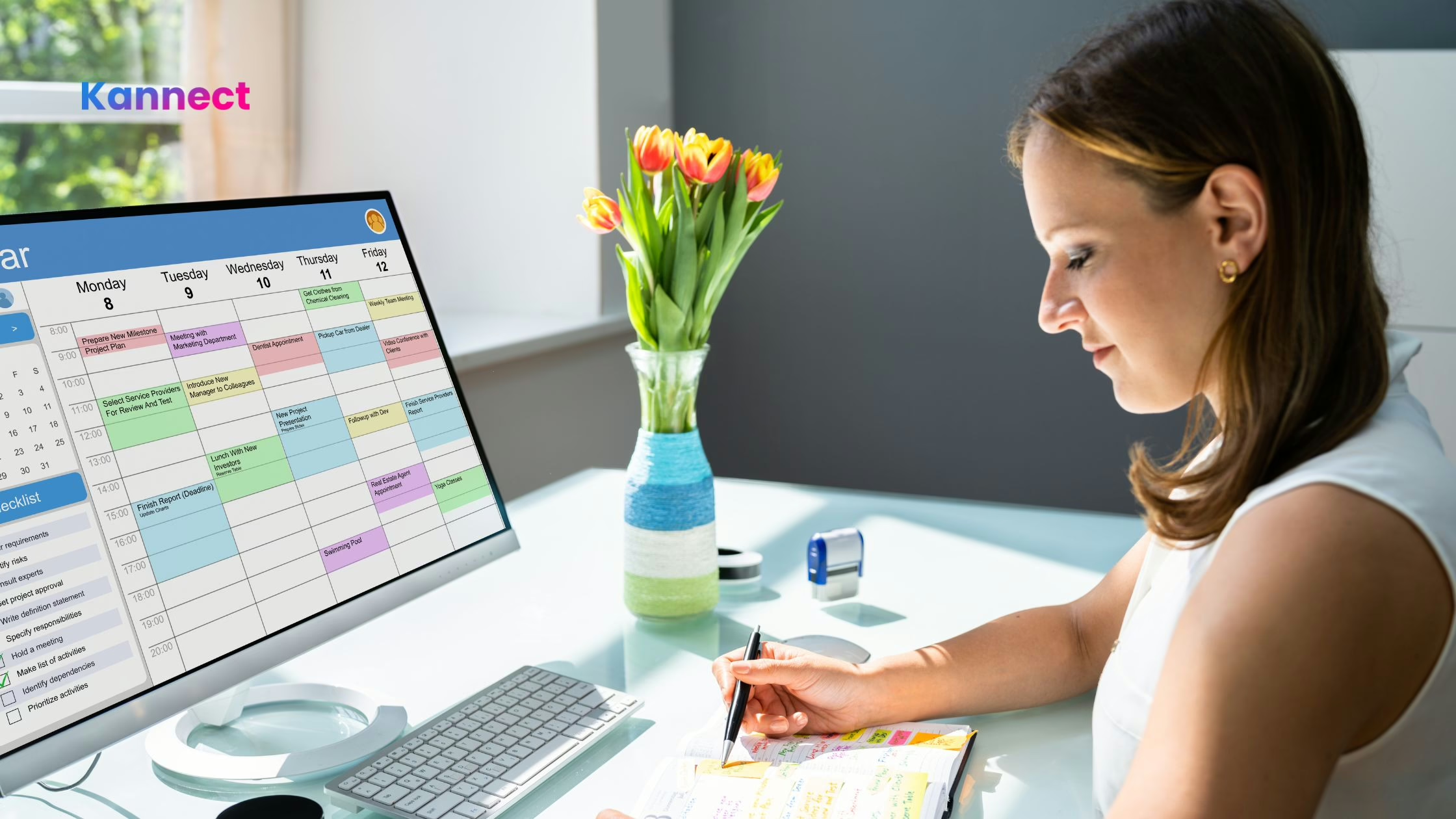
Community Blog Planning Made Easy: A 5-Step Content Calendar Framework
Table of Contents
🧩 Why Thoughtful Blog Planning Is the Secret Ingredient Your Community Needs
Let’s face it: blog planning often starts off with good intentions and ends in content chaos. You might strike gold with one post, get crickets on the next, and end up staring at a blank doc wondering what to write and why it even matters. If you’re leading a digital community, this uncertainty isn’t just frustrating, it holds you back from building consistent value and connection.
Great content doesn’t come from luck. It comes from intentional blog planning – a rhythm that helps you publish with purpose, not pressure. Whether you’re nurturing a new member base or managing a mature community, having a strong blog planning process helps you shift from reactive mode to strategic storytelling. That’s where a content calendar becomes your best ally.
But not just any calendar. You need a flexible, intentional, community-first framework that helps you align content with your values, member needs, and engagement goals. That’s exactly what this blog offers: a simple, 5-step structure to take the guesswork out of blog planning and make it a whole lot more enjoyable.
Better yet? Platforms like Kannect supercharge this strategy with tools like Content Management, Campaign Management, and real-time Analytics so you can not only schedule content but also track how it’s performing, who it’s reaching, and what’s truly resonating.
❓ What is the 80/20 rule for blogging?
The Pareto Principle, better known as the 80/20 Rule says that 80% of your results come from just 20% of your efforts. When it comes to blogging, this often plays out in a familiar way: around 80% of your blog traffic comes from 20% of your posts.
What does that mean for your blog planning strategy? It means not every post will be a hit and that’s okay. The goal isn’t to strike gold every time. It’s to identify the kind of content that consistently performs well and plan more of what actually works. By using this insight during your blog planning, you save time, focus your creative energy, and amplify the posts that truly move the needle for your community.
❓ How do I create a blog plan?
That’s exactly what we’re about to walk through. Whether you’re just getting started or want to level up your blog planning system, these next five steps will help you plan your blog content with clarity and purpose while keeping your community at the center of it all.
Step 1: Get Clear on Your Community Goals
Before you write a single word, know what you’re writing for.
Blog planning without clarity is like setting out on a road trip without a destination. Sure, you’ll get somewhere, but is it where your community actually wants to go?
This is why your content calendar should begin with a clear connection to your community goals. Are you trying to:
- Educate members about a particular topic?
- Drive traffic to an upcoming event?
- Strengthen member relationships and spark conversations?
- Recruit new members or increase visibility?
- Highlight community wins and stories?
Each blog post should play a small role in your larger engagement strategy. And when you align content with purpose, your posts won’t just get read, they’ll resonate.
💡 Make It a Team Sport
With Kannect’s Content Management features, you can involve your team, or even community members in content creation. Use Task Management to assign writing, reviewing, or design responsibilities. This ensures everyone knows what they’re working on and why.
🔶 Let’s Bring Stella’s Community Blog to Life
To better understand how this works in practice, let’s follow Stella, the community manager of a fitness and wellness group, as she plans her upcoming blog content.
Stella starts by revisiting her goals for the community. She knows that she’s not just writing random posts to fill up the content calendar, every post needs to further her mission.
Her goal for the next quarter? To increase community engagement and support members who want to improve their wellness habits. She believes that in order to engage members, she must first understand what motivates them: consistent tips, actionable advice, and stories of success from real members.
🎯 Why Goal Clarity is the Foundation of Blog Planning:
When your content has no clear purpose, it’s easy to fall into the trap of creating for the sake of consistency, not connection. Blog planning rooted in goal clarity prevents that. It ensures your posts ladder up to a larger mission, not just a weekly to-do. Whether your goal is to educate, inspire, inform, or activate your community, getting specific about why you’re publishing each piece keeps your calendar focused and your messaging aligned. This kind of clarity doesn’t just benefit your team, it builds trust with your readers, who begin to see your blog as a consistent, valuable resource.

Step 2: Understand What Your Audience Actually Needs
Blog planning isn’t about broadcasting, it’s about tuning in. When you write blog posts that genuinely reflect your members’ questions, challenges, and goals, you stop creating “content” and start creating connection.
So, before you start drafting headlines, take a moment to listen. Not just to what’s loud, but to what’s consistent. Look at the patterns in the feedback, the recurring themes in your community discussions, and the little moments that show you what matters to your people.
🔶 Stella’s Next Move: Listen Before You Write
Now back to Stella. With her goals defined in Step 1, she knows her mission: keep members engaged through relevant content. But relevance doesn’t come from brainstorming in isolation, it comes from listening first.
Stella dives into Kannect’s Communication Management to scan member conversations. She runs a quick poll:
“What’s stopping you from working out consistently?”
Top answers?
▶ Lack of time
▶ No motivation
▶ Don’t know where to start
There! Stella has three blog topics perfectly gathered from listening attentively to the real needs:
- “10-Minute Workouts That Actually Work”
- “How to Find Your Fitness Motivation Again”
- “A Beginner’s Guide to Starting Your Wellness Journey”
She also notices some members chatting about burnout and mental health. Lightbulb moment: she adds “Why Rest Days Are Part of the Plan” to her blog planning calendar, knowing it speaks to a real and timely need.
💡 Use Data to Sharpen Your Instincts
Stella pairs her research with insights from Kannect’s Analytics and Reporting. She looks at engagement trends and sees that posts on meal prep and fitness routines consistently outperform general wellness tips. That data confirms her next move: focus on practical, action-based blogs.
And with Kannect’s Campaign Management feature, she even starts a weekly “Ask Me Anything” thread to crowdsource blog topics directly from members – talk about co-creating content that hits home.
🎯 How This Fuels Blog Planning
By this point, Stella’s content calendar isn’t just a collection of ideas—it’s a mirror of her community’s needs. She’s writing for real people, not an algorithm. And that’s the whole point of blog planning for communities.
Whether you’re building a fitness group, a local creative circle, or a tech user base, this step is crucial:
Listen. Ask. Validate. Plan.
Step 3: Build a Realistic and Repeatable Content Rhythm
Here’s the thing about blog planning: consistency beats intensity. You don’t need to publish every day, you need to publish strategically and sustainably.
This is where many community-led brands stumble. They start off strong, posting twice a week and then vanish for a month. The solution? A rhythm that works for your bandwidth and your community’s attention span.
🔶 Stella’s Strategy: From Chaos to Cadence
Stella used to post blogs whenever inspiration struck, which meant long gaps, rushed deadlines, and burned-out contributors. Now, she sets a predictable rhythm that serves both her audience and her internal team.
With the help of Kannect’s Content Management, Stella maps out a blog schedule that fits her team’s capacity. Here’s what she does:
- Weekly Member-Focused Post (e.g. workout tips, meal plans)
- Monthly Story Feature (e.g. “Member of the Month” or transformation stories)
- Quarterly Deep Dive (e.g. expert interview or research-backed trend article)
By mixing lighter, high-frequency posts with deeper, slower-burn content, she keeps things fresh without overwhelming her team.
💡 Use Templates to Save Brainpower
Stella creates a simple blog planning template on Kannect. Each blog entry includes:
- Working title
- Intended goal (e.g. educate, inspire, drive event signups)
- Primary keyword
- Target publish date
- Assigned team member
- Status (ideation, drafting, review, published)
This system lives inside Kannect, so everyone – from writers to designers to editors stays on the same page. It’s not just about managing content; it’s about planning with clarity.
🎯 Why Rhythm Matters in Blog Planning
When you set a content cadence, you create:
- Trust (your members know when to expect new content)
- Focus (your team works toward common timelines)
- Momentum (publishing becomes a habit, not a hurdle)
Whether it’s once a week or twice a month, find your community’s sweet spot and stick with it. Stella doesn’t post more, she just posts better. That’s the real win in blog planning.
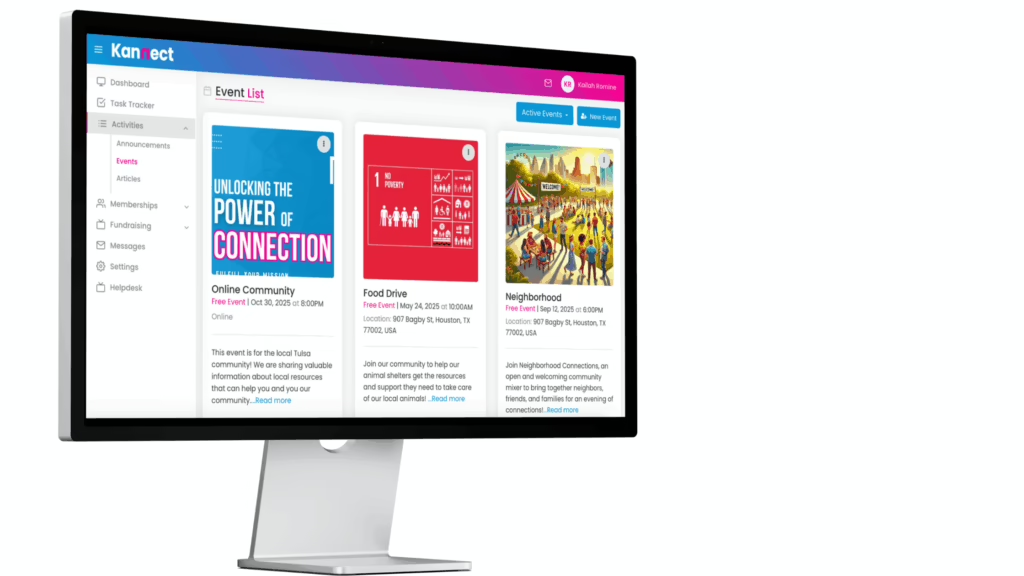
Step 4: Use a Visual Content Calendar to Map It All Out
Once you’ve got the rhythm, now it’s time to see it.
A visual content calendar transforms your scattered blog ideas into a cohesive, well-timed plan. It helps you track topics, deadlines, contributors, and publishing dates at a glance so nothing falls through the cracks.
🔶 Stella is Turning Ideas into a Visual Plan
Stella now has her content rhythm, topic list, and contributors in place. But how does she manage the moving pieces?
She opens up Kannect’s Content Management dashboard, selects the calendar view, and begins slotting in her blog ideas:
- Mondays: Quick tips & tutorials
- Second Thursday: Long-form features
- Last Friday: Community win or story
She color-codes posts by content type and tags contributors using Task Management. Now, everyone on her team knows what’s coming up, what they’re responsible for, and when things are due.
Plus, with Kannect’s Communication Management, Stella sets up gentle reminder messages for writers and designers as deadlines approach. No more last-minute scrambles.
💡 Plan Your Blog Like a Campaign
Group related posts into mini content campaigns. For example, Stella’s “30-Day Wellness Challenge” includes:
- A kickoff post introducing the challenge
- Weekly progress blogs with tips and member shout-outs
- A closing blog celebrating results and inviting feedback
This keeps readers engaged across multiple touchpoints and gives your blog planning a sense of flow and purpose.
🎯 Why a Visual Calendar is a Game-Changer
A visual content calendar isn’t just about organization. It gives you:
- A bird’s eye view of your blog strategy
- Clarity on timing, frequency, and contributor load
- Flexibility to adjust while staying aligned
Whether you’re a solo content creator or managing a full team, a calendar view helps transform blog planning into an easy-to-follow system. Stella no longer wonders what to publish next, her calendar already knows.
Step 5: Review, Reflect, and Refine Regularly
Your content calendar isn’t a “set it and forget it” kind of thing. Blog planning is a living, breathing process that evolves with your community. The best community-led blogs grow not because they got it perfect the first time, but because they kept learning along the way.
🔶 Stella’s Journey Ahead: Learning from What Works (and What Doesn’t)
By the end of the month, Stella doesn’t just check off posts that went live, she circles back. She opens Kannect’s Analytics and Reporting to see which posts performed well:
- Which blogs had the highest views?
- Which ones sparked conversations or comments?
- What fell flat and why?
She discovers that her “Quick Workout Tips” posts consistently outperform her general wellness content. So, she leans in. She reshapes next month’s calendar to include more bite-sized how-to posts and community shout-outs.
Stella also shares a simple feedback form using Kannect’s Communication Management, asking members:
“Which blog post helped you most this month?”
“What do you want to read about next?”
Now she’s not just publishing content, she’s co-creating it with her audience.
💡 Make It a Monthly Ritual
Set a recurring task (hint: Kannect’s Task Management makes this easy) to review blog performance and gather insights every month. Make space for:
- Celebrating wins (What worked?)
- Asking questions (What surprised us?)
- Making changes (What needs to shift?)
This step ensures your blog planning process stays flexible, responsive, and aligned with your community’s pulse.
🎯 The Real Power of Ongoing Planning
Think of blog planning as less of a checklist, and more of a community heartbeat. When you plan, review, and adapt regularly, your content becomes a trusted presence in your members’ lives, not just a post they scroll past.
Stella doesn’t have to guess anymore. She’s not scrambling for blog topics or wondering what her members want. She’s got a system. She’s got insights. And most importantly, she’s got momentum.
Turning Plans Into Purpose
At its core, blog planning isn’t just about filling a calendar, it’s about fueling conversations, deepening connections, and creating meaningful momentum within your community. By getting clear on your goals, understanding what your members truly need, building a consistent rhythm, and visualizing your roadmap, you’re not just managing content, you’re shaping culture. And with a platform like Kannect, where Content Management, Task Assignment, and Analytics work in sync, you don’t have to plan alone. You’re equipped with smart tools designed to help your content hit the mark and your message spark movement.
🔶 And as for Stella? Her blog went from scattered posts to a purposeful content flow that her members now look forward to every week. Engagement is up, feedback is glowing, and her content calendar has become the heartbeat of her thriving wellness community. What changed? She stopped guessing and started blog planning with intention.
So, plan with purpose. Create with care. And remember: every blog post is a small spark that can ignite lasting engagement in your community. When done right, blog planning becomes more than a system, it becomes a superpower.
Let’s Make Blog Planning More Fun and Impactful!
✔️ Follow us on LinkedIn for ideas that build real communities.
✔️ Subscribe to The Community Engagement Playbook – one smart read, once a week.
Let’s make blog planning feel less like a task, and more like a conversation.
Try Kannect today
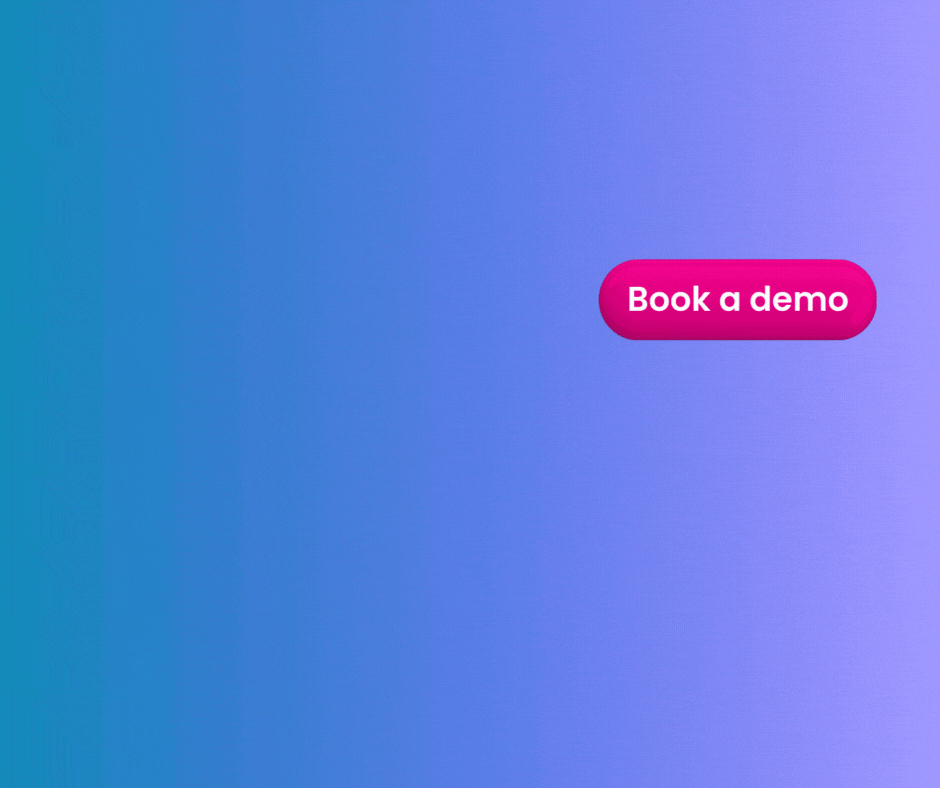
How do I create a blog plan?
Creating a blog plan starts by identifying your content goals, understanding your audience, and mapping out a content calendar that aligns with your community strategy. Begin with your “why,” outline key themes, assign content responsibilities, and schedule posts consistently. For SEO blog planning, be intentional about keywords, internal linking, and topics that serve both your members and search engines. Tools like Kannect can help streamline the entire process by offering built-in features for collaboration, task tracking, and content management.
What is the 80/20 rule for blogging?
The 80/20 rule suggests that 80% of your traffic, engagement, or results come from just 20% of your content. In blog planning, this means focusing more energy on the types of posts that already perform well – those evergreen topics, tutorials, or member stories that drive clicks, comments, and shares. By analyzing what works (using tools like Kannect’s Analytics and Reporting), you can lean into your strongest content and amplify its impact.
Why should community builders use Kannect for blog planning?
Kannect isn’t just a platform for community engagement, it’s also a powerful hub for blog planning. With built-in Content Management, Task Management, and Analytics, it lets you brainstorm, assign, publish, and track blog content all in one place. Whether you’re running solo or managing a team, Kannect helps you move from content chaos to clear, coordinated planning.
What’s the difference between blog content planning and social content planning?
While both aim to serve your community, blog content planning is more in-depth and long-form, often tied to educational, evergreen, or SEO-driven goals. Social content planning is typically faster-paced and reactive. The two should complement each other, but your blog gives you the space to explore topics deeply and anchor your thought leadership within the community.
Is blog planning still relevant if my community is small or just starting out?
Yes, especially then! Blog planning gives you structure, helps you define your voice early, and builds consistency. Even with a small audience, thoughtful blog posts can deepen trust, attract the right people, and lay the foundation for future growth. Remember, it’s not about volume, it’s about value.


